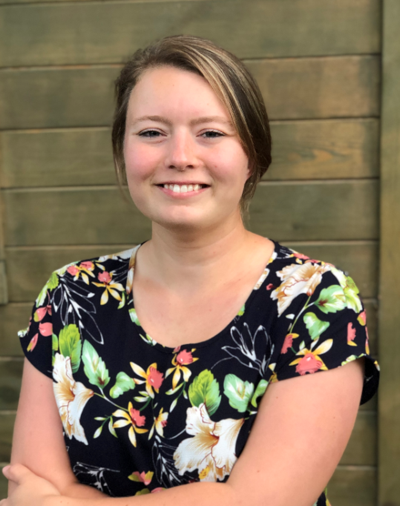circulating tumor cells a real-time liquid biopsy
Kiki Andree is a PhD student in the Medical Cell Biophysics group. Her supervisor is prof.dr. L.W.M.M. Terstappen from the faculty of Science and Technology.
 Cancer is one of the leading causes of death worldwide. For adequate and effective treatment a correct cancer diagnosis is essential. Traditionally, this is done by means of imaging and lab tests followed by confirmation through a biopsy of the tumor. Next to these traditional methods, circulating tumor cells can be isolated from blood and used as a liquid biopsy providing a source of information on the tumor characteristics. Circulating tumor cells (CTC) are cells that shed from a tumor site, enter the bloodstream, spread through the body and can form metastases at distant sites. CTC have important prognostic and therapeutic implications but as their numbers are very small, detection is very difficult. CTC are found in frequencies in the order of 1 - 10 CTC per mL of whole blood in patients with metastatic disease. For comparison, 1 mL of blood contains around 5 million white blood cells and around 5 billion red blood cells. Current technologies, like CellSearch, usually isolate CTC from 7.5 mL of blood. Big advantage over traditional tissue biopsies, where often surgery is required, is that sampling blood for CTC isolation is less invasive and can be done repeatedly thereby allowing a source of real-time information during the course of disease. However, in many patients non or very few CTC are detected in 7.5 mL but predictions suggest that all patients including those who do not have detectable CTC have at least 1 CTC in 5 L of blood. Increasing the processed blood volume would theoretically lead to an overall higher yield of CTC providing a sufficient source of tumor material.
Cancer is one of the leading causes of death worldwide. For adequate and effective treatment a correct cancer diagnosis is essential. Traditionally, this is done by means of imaging and lab tests followed by confirmation through a biopsy of the tumor. Next to these traditional methods, circulating tumor cells can be isolated from blood and used as a liquid biopsy providing a source of information on the tumor characteristics. Circulating tumor cells (CTC) are cells that shed from a tumor site, enter the bloodstream, spread through the body and can form metastases at distant sites. CTC have important prognostic and therapeutic implications but as their numbers are very small, detection is very difficult. CTC are found in frequencies in the order of 1 - 10 CTC per mL of whole blood in patients with metastatic disease. For comparison, 1 mL of blood contains around 5 million white blood cells and around 5 billion red blood cells. Current technologies, like CellSearch, usually isolate CTC from 7.5 mL of blood. Big advantage over traditional tissue biopsies, where often surgery is required, is that sampling blood for CTC isolation is less invasive and can be done repeatedly thereby allowing a source of real-time information during the course of disease. However, in many patients non or very few CTC are detected in 7.5 mL but predictions suggest that all patients including those who do not have detectable CTC have at least 1 CTC in 5 L of blood. Increasing the processed blood volume would theoretically lead to an overall higher yield of CTC providing a sufficient source of tumor material.
In this dissertation we investigated techniques allowing for the isolation and characterization of CTC from large volumes of blood which would be very beneficial for realizing a successful real-time liquid biopsy.
First, we looked into techniques where antibody functionalized surfaces, targeting CTC, are used to capture tumor cells from blood. For this, the affinity and epitope binding competition of 4 different α-EpCAM antibodies were measured. Next, the optimal antibody and set-up conditions were determined to capture cells on these surfaces and the successful capture of tumor cells from blood was shown. The advantage is that this approach allows us to flow blood, rather than using static conditions, making it possible to process larger volumes.
To characterize tumor cells isolated from blood we developed and evaluated a method using self-seeding microwells to obtain single CTC and assess their potential to proliferate. Using this method we were able to isolate and detect viable CTC from patient blood samples.
Next, within the CTCTrap consortium we investigated the use of a therapeutic apheresis, for the collection of CTC from peripheral blood in cancer patients. In addition an leukocyte depletion protocol based on the commercially available RosetteSep kit was developed for the isolation of CTC from large volumes.
The use of DLA and the protocols developed to isolate CTC from large volumes were evaluated in 2 patient studies.
We show that a significantly larger number of CTC can be obtained by processing a large blood volume through DLA. Although, the technologies to isolate CTC from the vast amount of mononuclear cells in DLA will need to be improved as during processing of the sample part of the CTC get lost. Processing large volumes while recovering the majority of tumor cells stays a challenge which has to be overcome in order to have a sufficient number of tumor cells to represent a biopsy.





